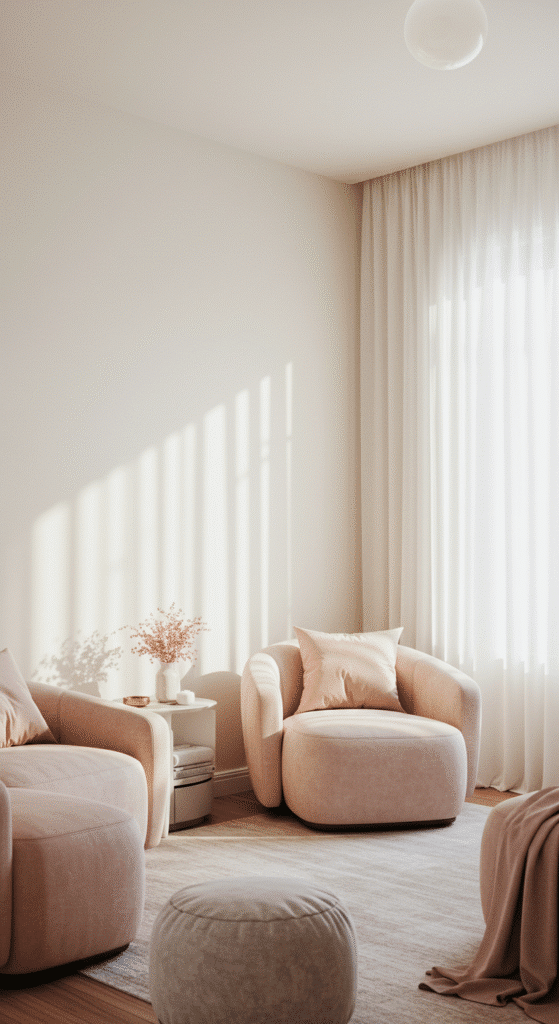
In today’s fast-paced world, having a dedicated healing room at home can be a powerful way to recharge your energy and restore your peace. Whether you’re into meditation, reading, or simply relaxing, creating a space that nurtures your soul is essential. Below are 30 calming and inspiring healing room ideas to help you design a sanctuary of serenity in your own home.
1. Soft Neutral Color Palette
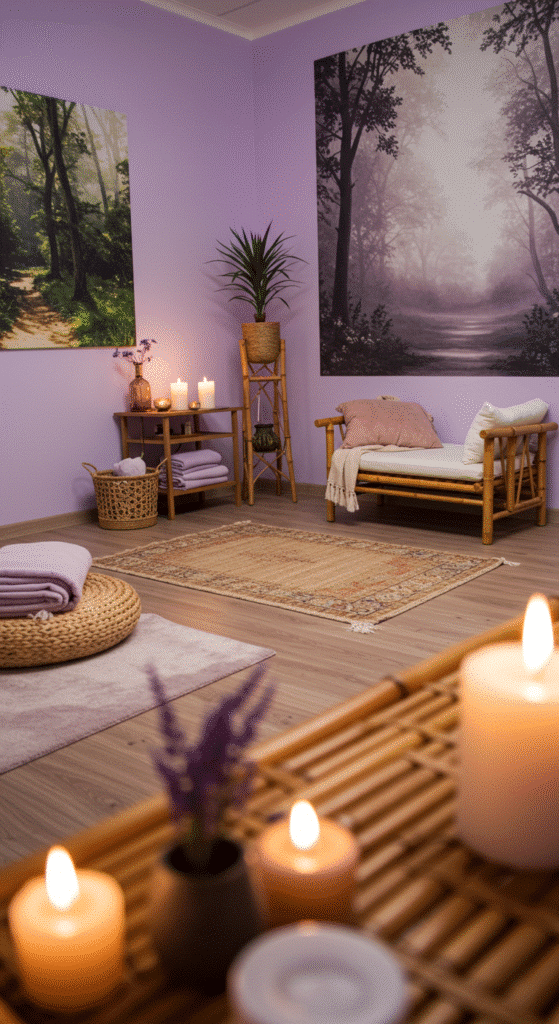
A soft neutral color palette instantly creates a sense of calm and warmth. Shades like beige, ivory, sage green, and soft gray offer a soothing atmosphere that invites rest. These hues reduce visual noise and let your mind breathe. Add natural textures like linen, cotton, or jute for extra softness. Keeping the color scheme muted allows your space to feel like a quiet retreat. It’s a simple way to set a peaceful tone.
2. Cozy Meditation Corner
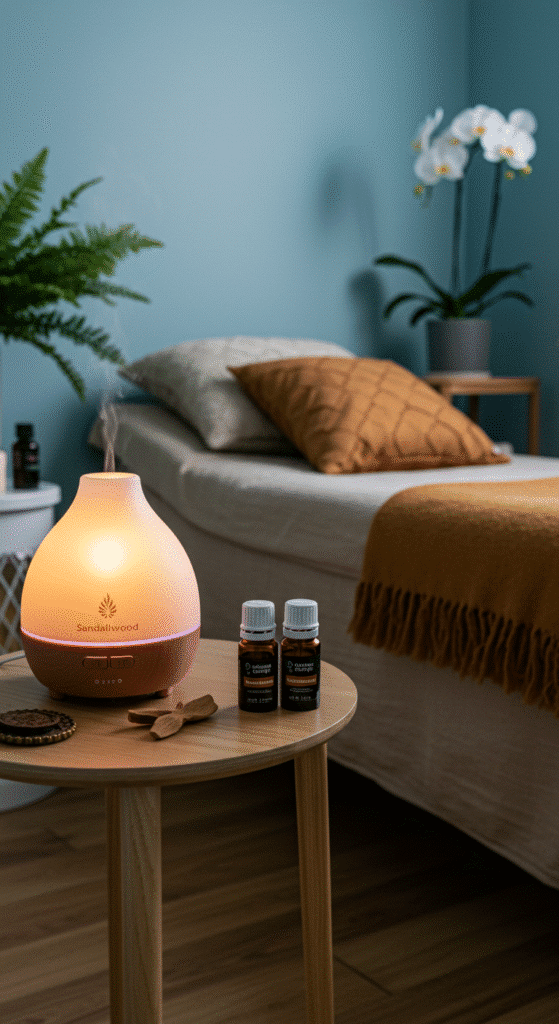
Carve out a cozy corner with floor cushions, a soft rug, and a small altar or table for candles and crystals. This spot becomes your sacred space for daily meditation or breathwork. Use items that bring you peace—like incense, calming stones, or spiritual symbols. Keeping the area free of clutter is key to allowing mental clarity. Whether you sit for five minutes or fifty, this nook helps you ground and reconnect. It’s your personal pause button.
3. Nature-Inspired Decor
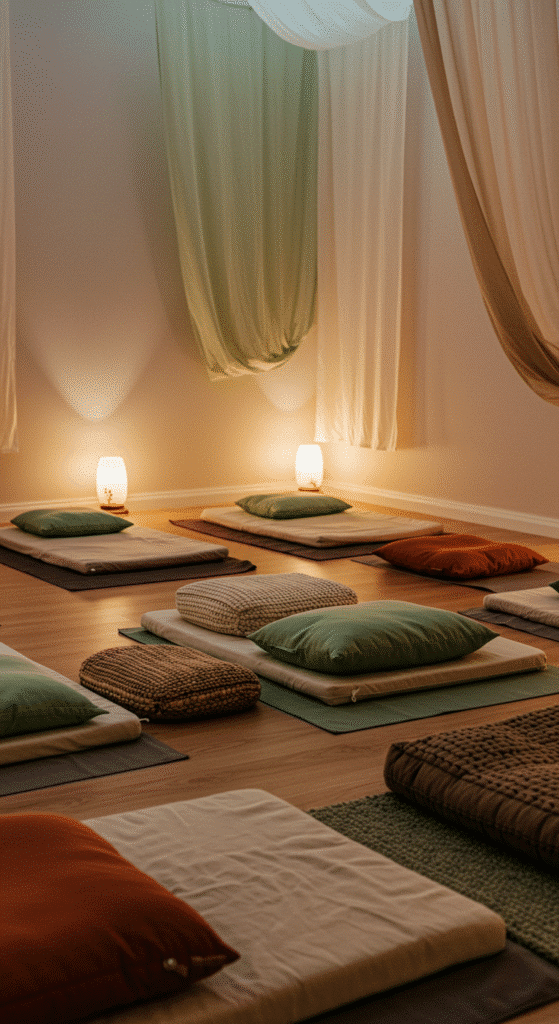
Bringing nature indoors is one of the most effective ways to heal through design. Incorporate wooden furniture, woven baskets, stones, and plants to mimic the serenity of the outdoors. Natural light, earthy colors, and organic shapes help align your space with the rhythms of nature. Even a small indoor fountain can mimic the calming sound of a stream. This connection to nature soothes anxiety and supports emotional balance. Let your room echo the peace of the forest.
4. Aromatherapy Setup
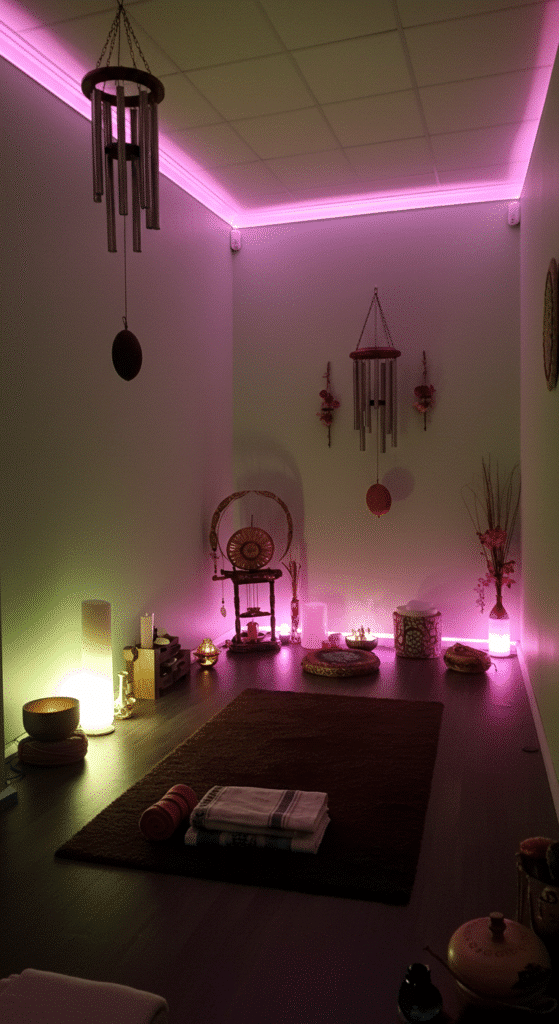
Essential oils are powerful tools for emotional and mental healing. Include a diffuser with scents like lavender, eucalyptus, sandalwood, or bergamot to encourage relaxation. Store your oils on a dedicated shelf with roller bottles for personal use. You can also use candles and incense for additional sensory support. Scent has a direct link to memory and emotion, making aromatherapy an essential part of any healing room. Let calming aromas guide you into a restful state.
5. Floor Seating with Layers of Comfort
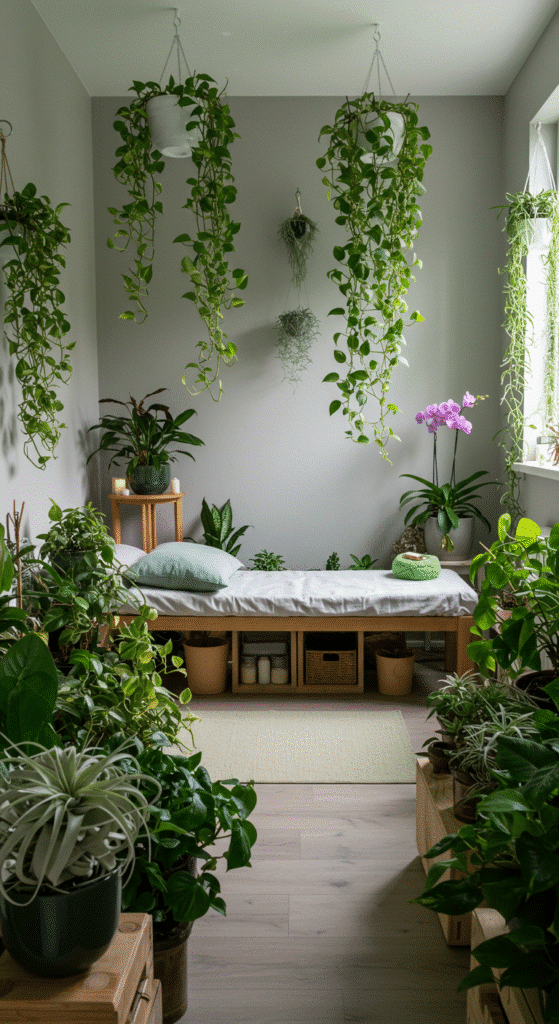
Swap traditional seating for floor cushions, poufs, and plush rugs to create a grounded, cozy feel. Sitting close to the floor encourages mindfulness and helps you feel anchored. Add layers like throw blankets and bolster pillows for softness and support. This informal seating style invites longer sessions of journaling, reading, or reflecting. It transforms the room into a space of gentle intention. Plus, it’s easy to rearrange based on your needs.
6. Sound Therapy Elements
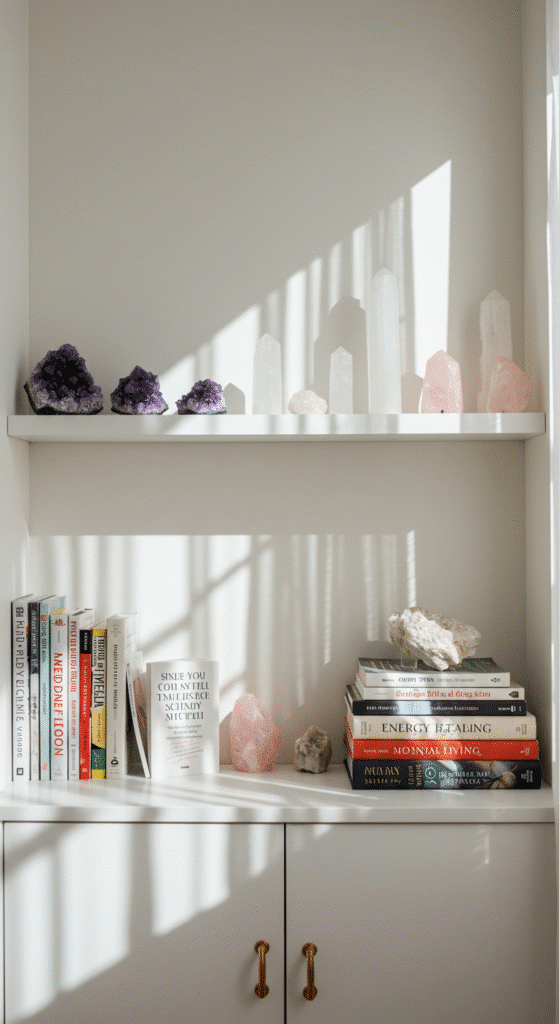
Sound plays a major role in emotional regulation and energy healing. Add singing bowls, chimes, or a Bluetooth speaker to play soft nature sounds or frequency-based music. Create a playlist of relaxing music or guided meditations. Even a small water feature can add tranquil white noise. These elements help clear mental clutter and shift your mood. Make sound an active part of your self-care practice.
7. Indoor Plants and Greenery
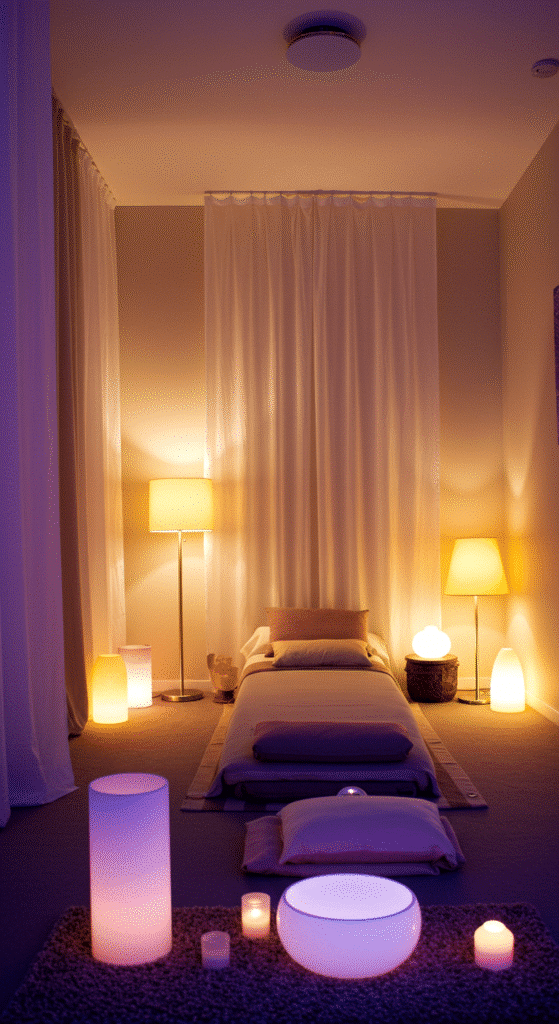
Plants not only purify the air but also provide emotional uplift. Include leafy greens like ferns, pothos, or peace lilies that thrive indoors. Position them near windows to maximize sunlight and vitality. Caring for plants brings a sense of routine and purpose. They also create visual softness and life in the room. Nature heals, and a few thriving plants can change the energy of your space completely.
8. Minimalist Shelving for Crystals and Books
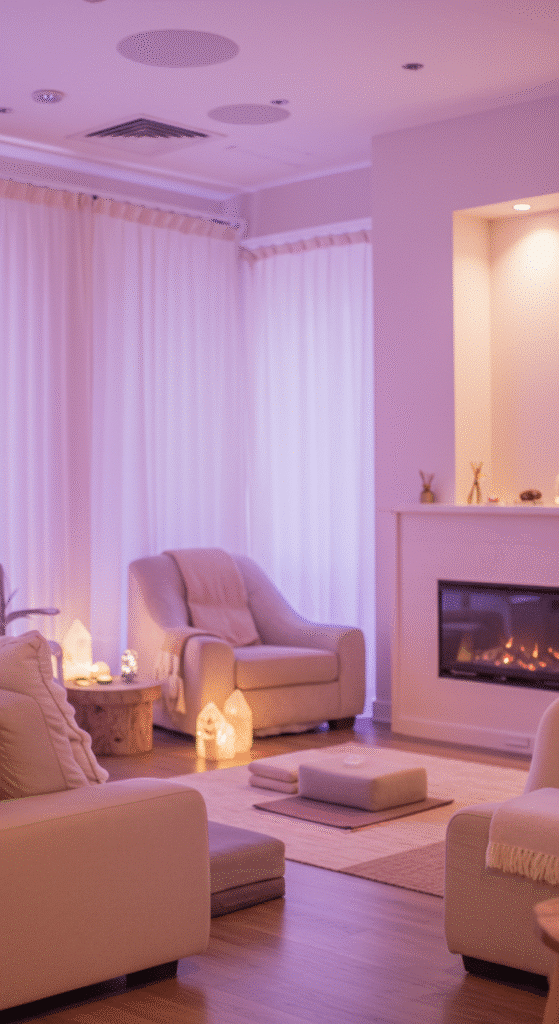
Add simple, open shelving to display your most treasured healing items. Crystals, intention candles, spiritual books, or gratitude journals all deserve a visible, intentional home. Keep the shelves clutter-free and arrange items by theme or color. Displaying meaningful pieces creates a sacred visual reminder of your journey. It also makes it easy to access your go-to healing tools. Treat this area like a mini altar of comfort.
9. Gentle Lighting and Lamps
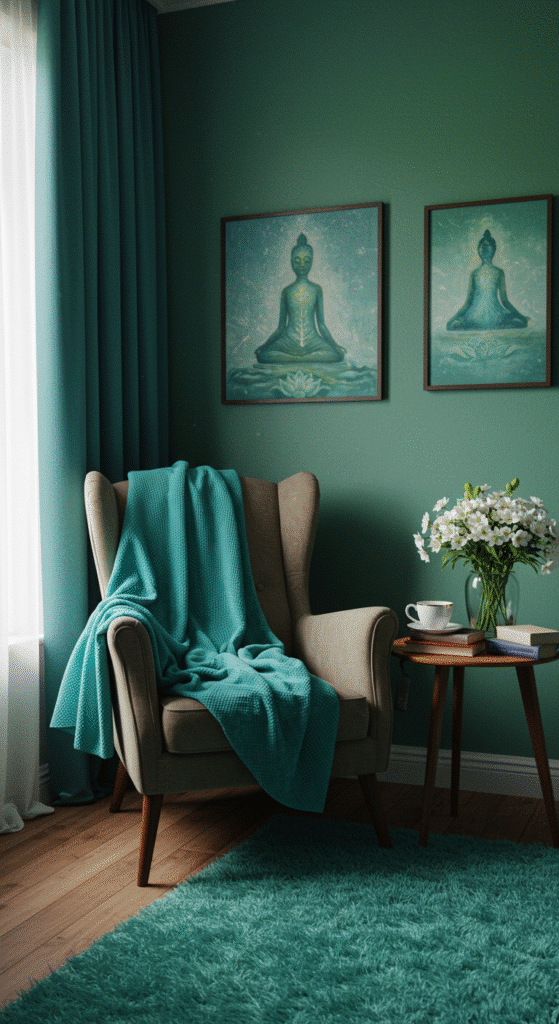
Harsh overhead lights can disrupt the calm energy of a healing room. Opt for warm-toned floor lamps, table lamps, or Himalayan salt lamps instead. Dimmable lighting gives you control over mood and ambiance. You can also use string lights or lanterns to add a magical glow. Lighting influences how the space feels, so aim for gentle and welcoming tones. Let your light sources mirror the serenity you want to feel inside.
10. Soft Music Station

Set up a corner for a record player, Bluetooth speaker, or small stereo that plays soft, healing sounds. Music is a powerful emotional anchor—it can calm nerves, inspire hope, or aid in deep rest. Curate playlists with piano, flutes, mantras, or ambient soundscapes. This station can become your go-to during stress or sleepless nights. Keep headphones nearby if you share space with others. Healing through sound is deeply personal and effective.
11. Reading Nook for Mental Escape
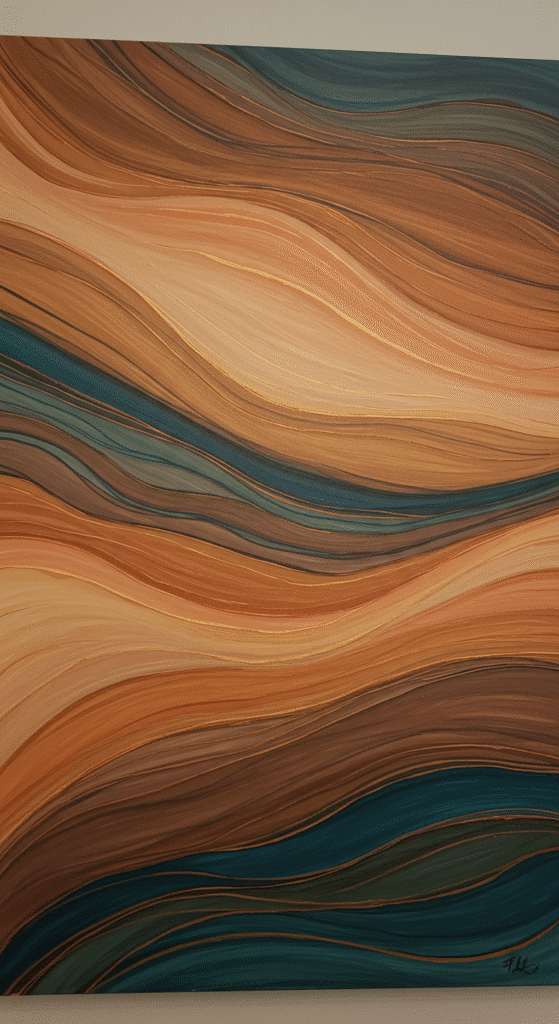
Every healing room needs a quiet reading nook. Add a cozy armchair or floor pillow with a small side table for tea and books. Choose titles that nourish the soul—whether fiction, spiritual teachings, or poetry. Surround yourself with stories that inspire healing and growth. The act of reading can be meditative and grounding. This is your space to escape, dream, and expand your inner world.
12. Journaling Desk with Intentional Tools
A small desk or writing station encourages daily reflection. Stock it with quality journals, pens, oracle cards, and affirmations. This area invites quiet thought, gratitude practice, or setting intentions. Use soft lighting and calming colors to support focused writing time. Your journal becomes a trusted friend in your healing journey. Let this desk be your container for emotional release and inspiration.
13. Healing Artwork and Wall Decor
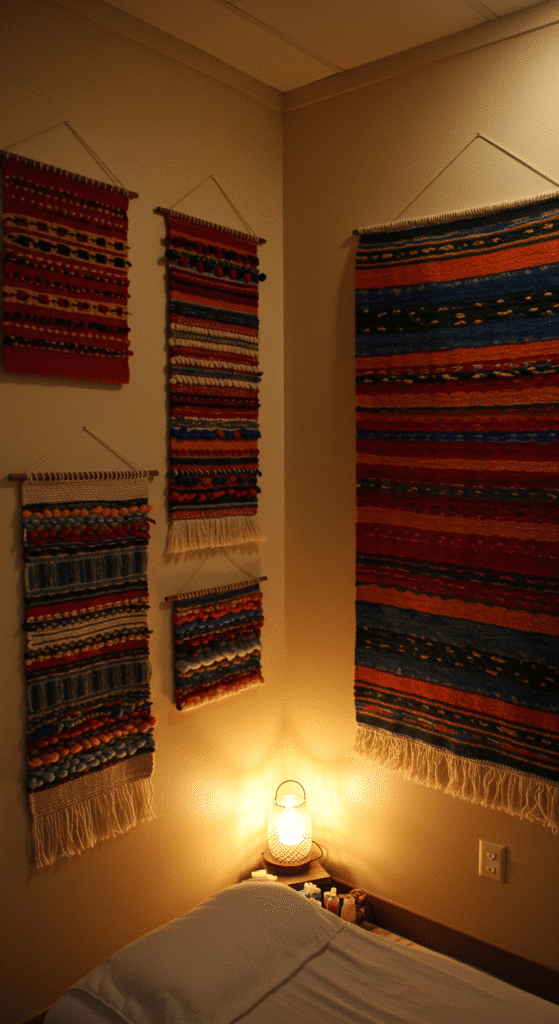
Choose artwork that evokes peace, clarity, or spiritual connection. Think watercolor prints, abstract landscapes, or calming mandalas. You can even hang affirmations, mantras, or quotes that speak to your soul. Visuals play a huge role in setting emotional tone. Surrounding yourself with uplifting imagery transforms the room into a healing sanctuary. Make your walls speak softly to your heart.
14. Yoga and Stretching Space
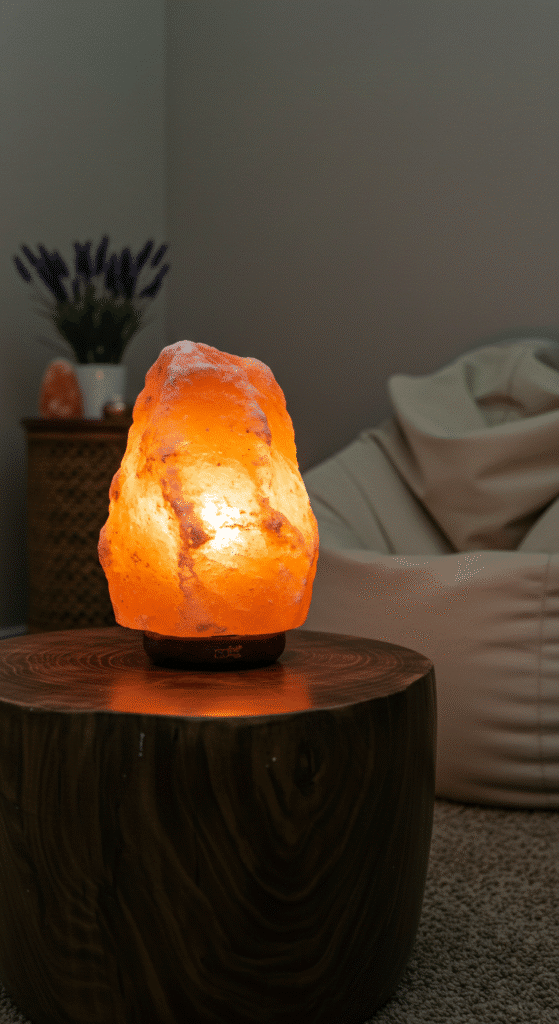
Reserve a part of your healing room for gentle movement like yoga or stretching. Keep a mat, blocks, and straps easily accessible. Add a mirror if space allows, and maybe some calming wall art nearby. This space supports body awareness and emotional release through movement. Even five minutes a day can center you. Let your body lead your healing process.
15. Tapestries and Wall Hangings
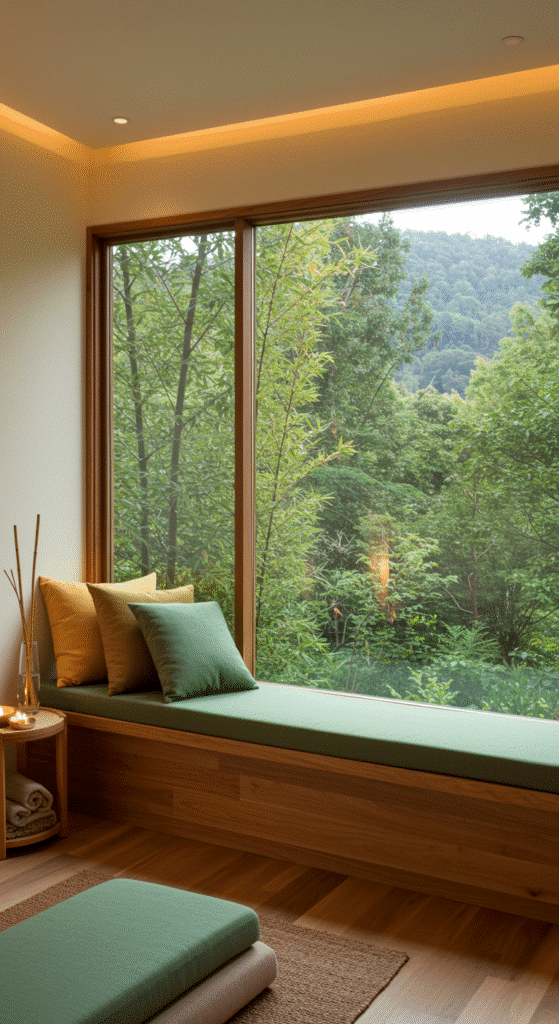
Fabric wall art adds texture and softness to your space. Choose tapestries with symbolic imagery—like chakras, moons, trees, or sacred geometry. These pieces can set the theme of your healing room while also acting as insulation for sound. They’re easy to change based on your mood or season. Plus, they bring in an artistic, bohemian energy. It’s decor that also nurtures the soul.
16. Himalayan Salt Lamp for Warmth and Purity
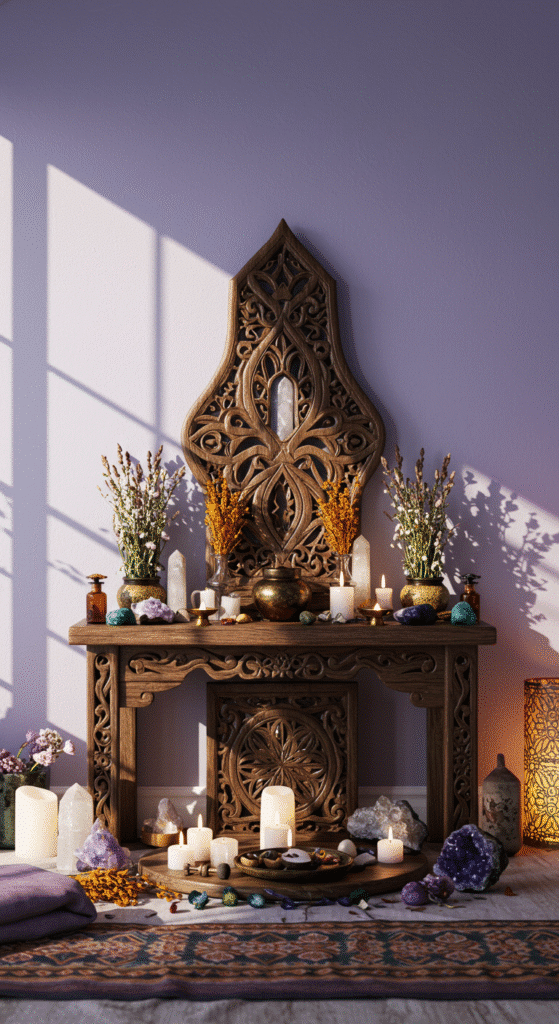
Himalayan salt lamps are known for their soft amber glow and air-purifying benefits. Place one on your bedside, desk, or meditation altar to create a grounding effect. These lamps help reduce anxiety and support better sleep. They also emit negative ions that are believed to balance energy in the room. Beyond function, they look beautiful and natural. Their warm light alone can shift the mood instantly.
17. Window Seat with Nature Views
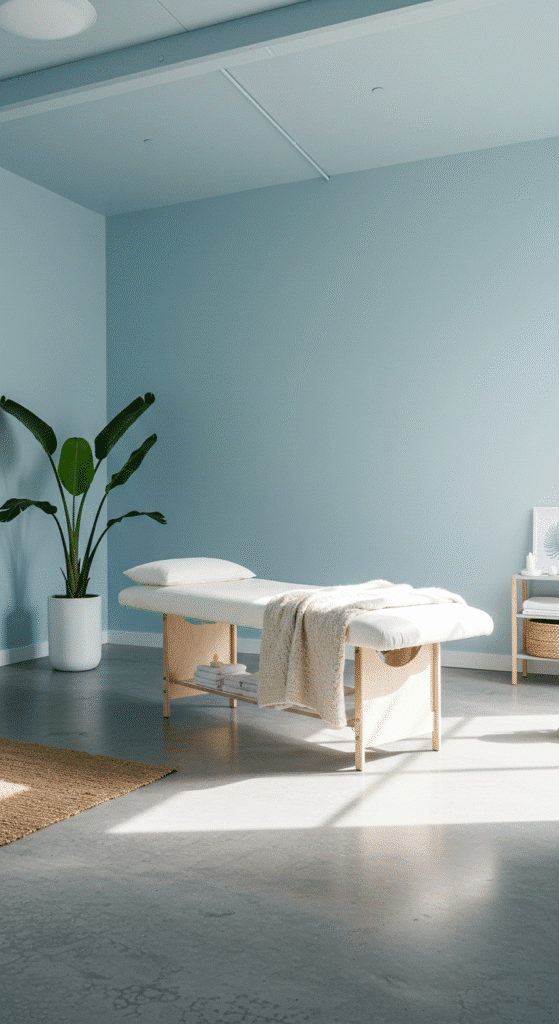
If your space allows, create a window seat or place a chair near a bright window. Natural light is essential for mood regulation and healing. Add cushions, a throw blanket, and a small table for tea or journaling. Looking out at trees, sky, or plants brings instant calm. This space encourages presence and reflection. Let it be your private escape into sunlight and stillness.
18. Sacred Altar for Intention
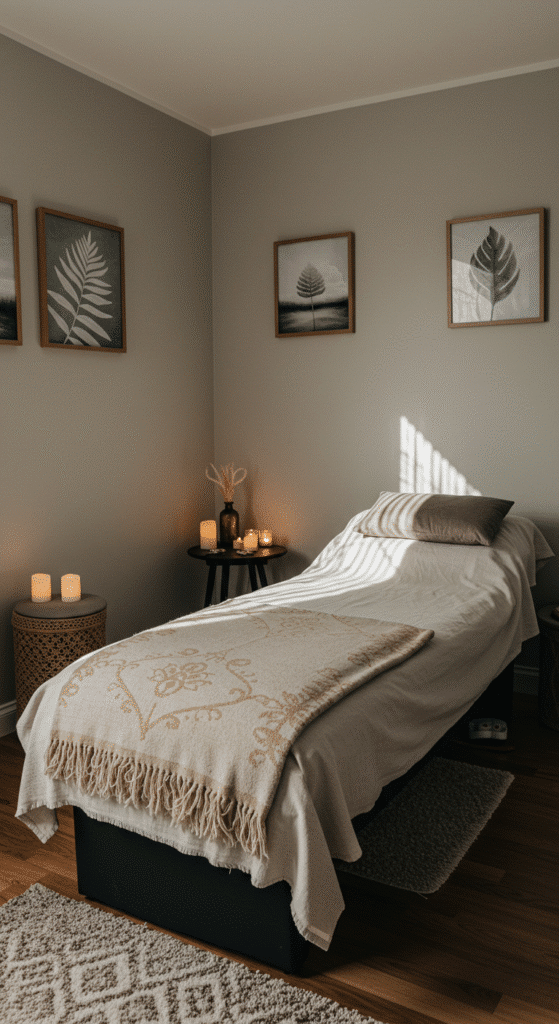
An altar doesn’t have to be religious—it can be a small table where you place objects that center you. Think candles, photos, symbols, or mementos from nature. Use it as a space to set intentions, pray, or simply sit in silence. The altar becomes an anchor in your room, a physical reminder of your inner peace and growth. Make it meaningful and personal to you.
19. Decluttered and Minimal Layout
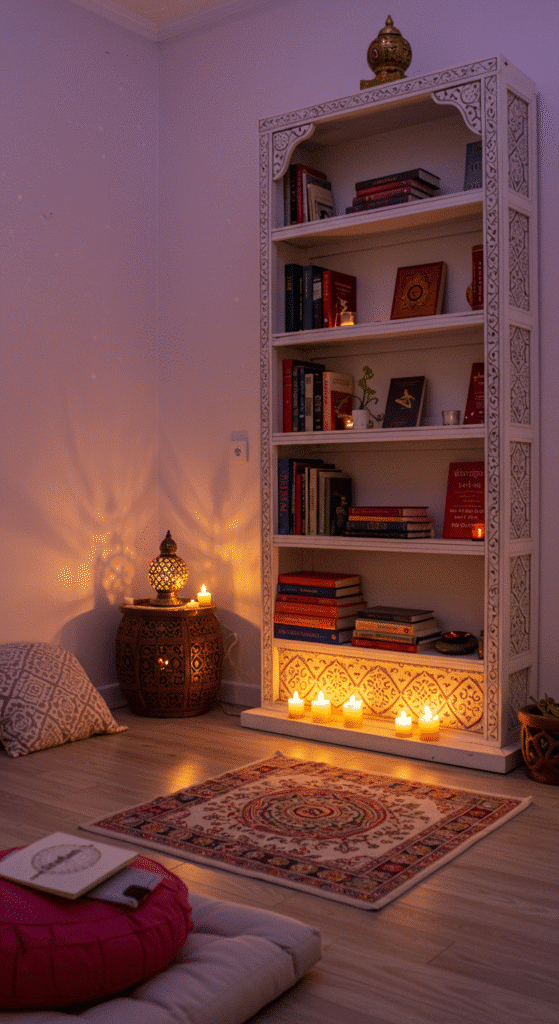
Healing begins with simplicity. A clutter-free room allows your mind and body to relax. Keep only what is essential, beautiful, or meaningful. Store tools in baskets or drawers to keep the surface calm. Minimalism doesn’t mean empty—it means intentional. When your space is clear, your energy can flow freely. It’s easier to breathe, focus, and rest.
20. Comfortable Daybed or Chaise Lounge
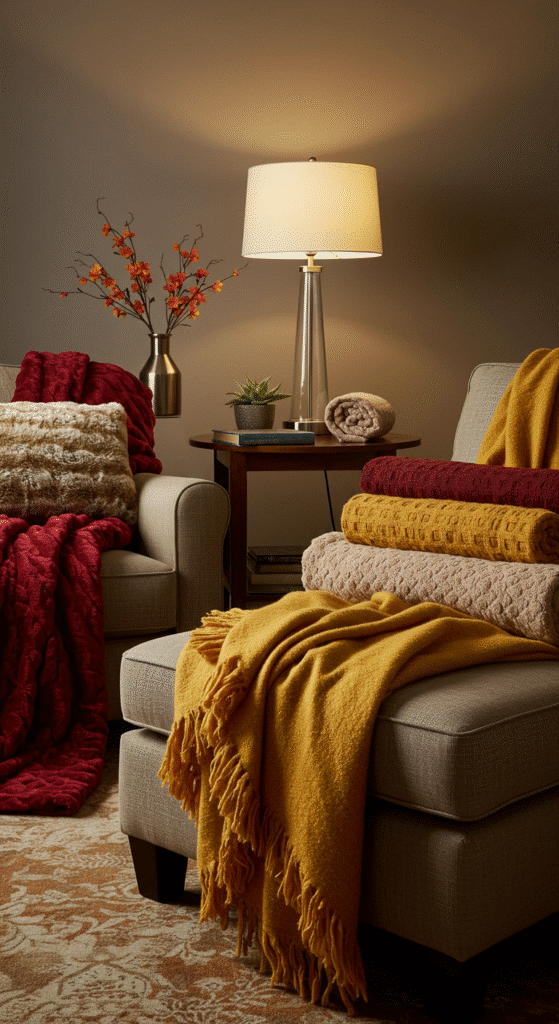
If space allows, a chaise or daybed provides the perfect spot for naps, reading, or guided meditations. Choose one in a soft fabric and neutral tone, and pair it with cozy throw pillows. This kind of seating feels luxurious and inviting. It also supports lounging without going fully into bed mode. Think of it as a self-care throne in your sanctuary.
21. Sacred Texts and Wisdom Books
Curate a shelf or basket with texts that feed your spirit. Whether it’s spiritual teachings, poetry, philosophy, or affirmations, these books can become daily companions. Having them within reach invites quiet reflection. They can guide you through emotional blocks or inspire new perspectives. Your healing space should also be a place for inner exploration and wisdom.
22. Creative Corner for Art or Crafts
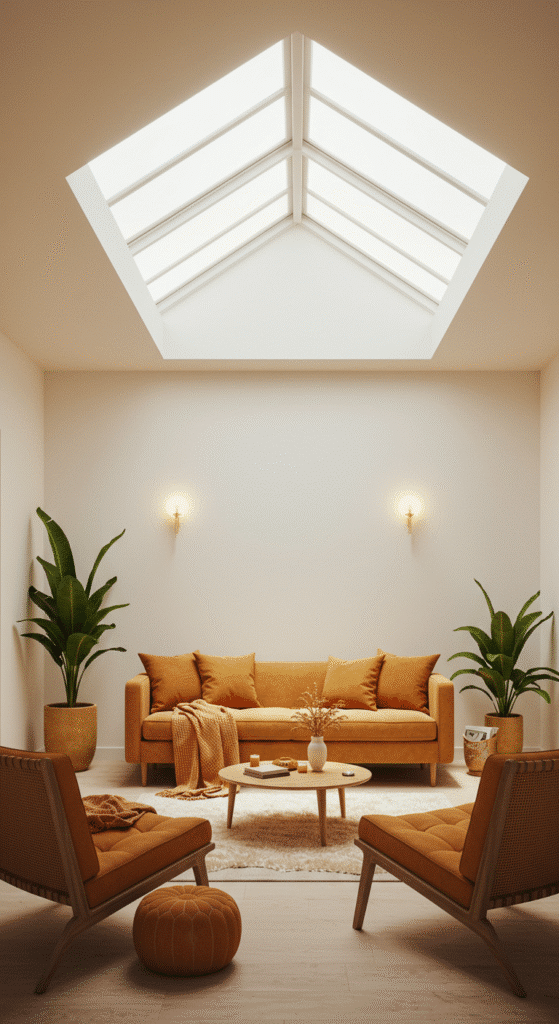
Healing also happens through creativity. Dedicate a corner of your room to painting, drawing, or other crafts. Keep art supplies organized but visible to encourage spontaneous inspiration. This space allows you to express emotions visually, which can be incredibly therapeutic. No pressure to be perfect—just permission to explore and feel. Creativity connects you with joy and inner child energy.
23. Warm Throw Blankets and Weighted Comfort
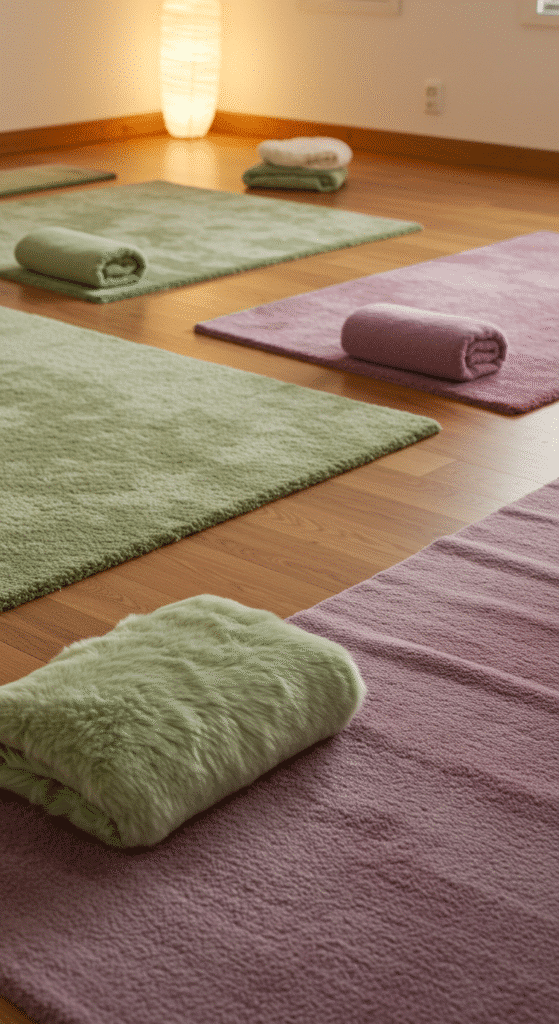
Layer your room with different types of throws—light cotton for summer, plush fleece for winter, or even a weighted blanket for deep rest. These textures offer tactile comfort that eases anxiety. A weighted blanket especially helps regulate the nervous system and promotes better sleep. Keep them folded neatly but within reach. Sometimes, the best therapy is wrapping yourself in warmth.
24. Digital Detox Zone
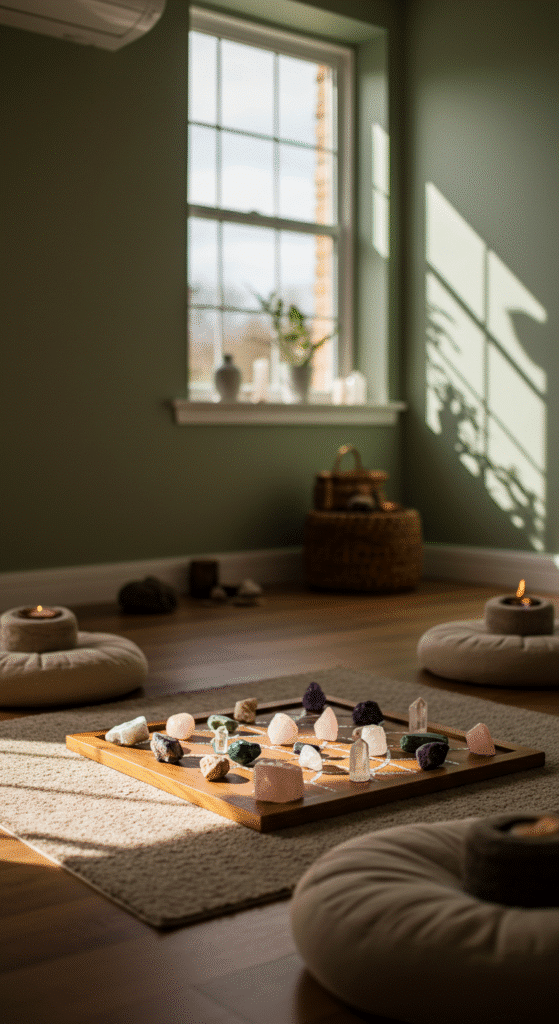
Make your healing room a no-phone zone if possible. Remove unnecessary electronics or at least keep them hidden. Instead, fill the room with analog activities—reading, writing, stretching, meditating. You can even place a “digital detox” basket near the door to encourage device-free time. Reducing screen exposure gives your brain space to rest and regenerate.
25. Soft Rugs for Grounding
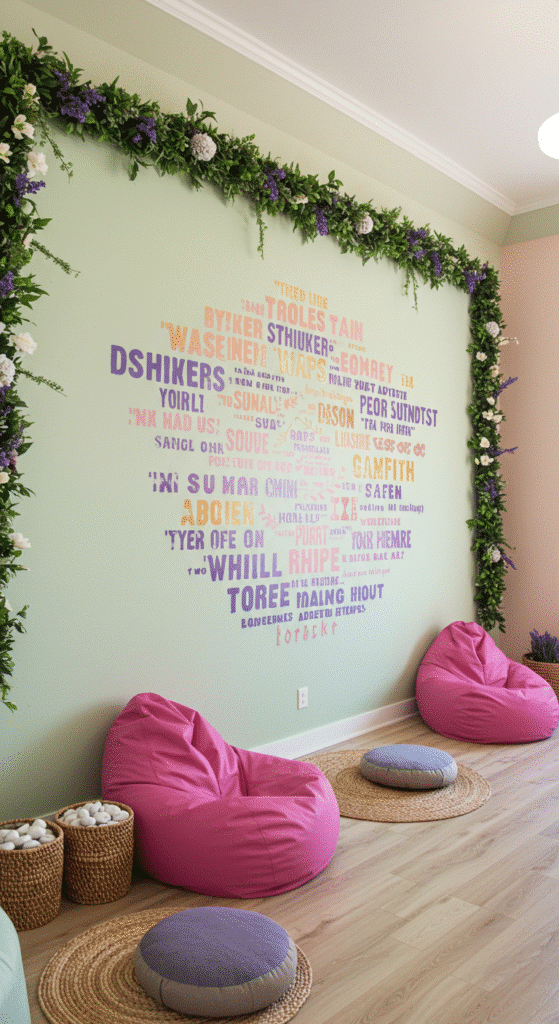
A soft area rug instantly adds comfort and warmth to any healing room. Choose a texture that feels good under bare feet. Natural fiber rugs like wool, cotton, or jute also contribute to the room’s earthy energy. Sitting or walking barefoot on a rug helps you ground and connect to your body. Rugs define the space and absorb noise, enhancing coziness.
26. Healing Crystal Grid or Tray
If you’re into energy healing, create a small crystal grid on a tray or cloth. Arrange your favorite stones with a central intention in mind—like peace, love, or clarity. You can change the layout based on moon phases or personal goals. The visual and energetic presence of crystals adds a powerful layer of support. This display can also serve as a meditative focal point.
27. Inspirational Quote Wall
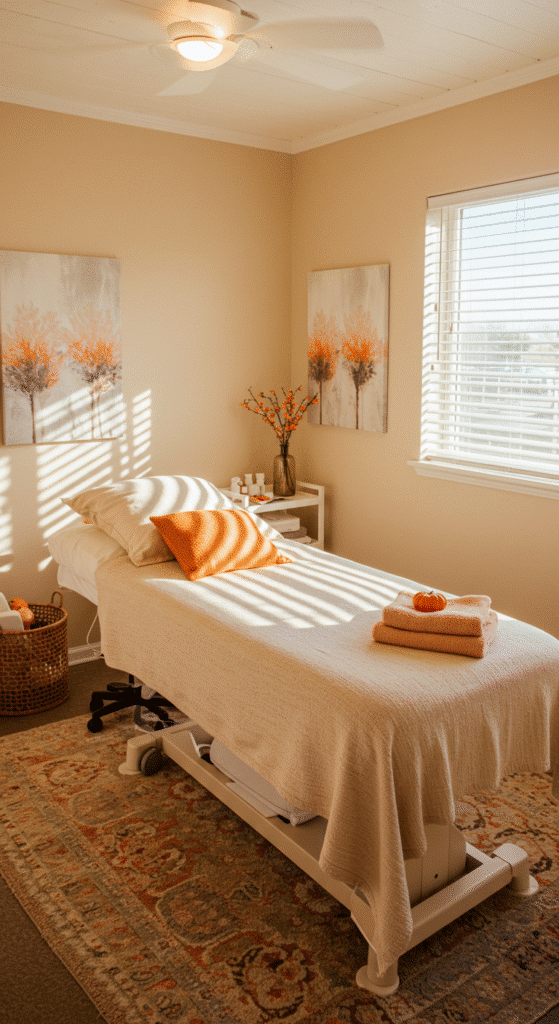
Designate one wall or frame to rotate your favorite quotes. Choose words that lift your spirit or ground you in the present. Use handwritten calligraphy, art prints, or even a corkboard to keep it flexible. Reading encouraging words each day can shift your mindset. These quotes become gentle reminders of your strength and intention.
28. Breathwork and Energy Healing Space

Leave open floor space to practice breathwork, reiki, or other somatic therapies. Keep props like eye pillows, essential oils, and tuning forks nearby. This is where deep release and healing happen through the body. You don’t need much—just an open area and the willingness to tune in. Your healing space should invite embodiment, not just stillness.
29. Seasonal Decor Changes
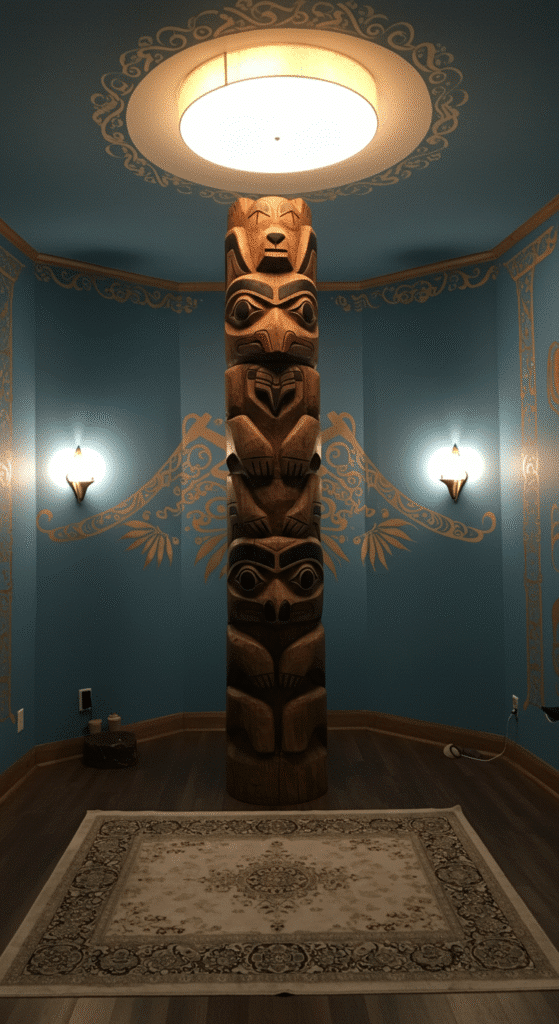
Keep your healing room aligned with the seasons by rotating décor. In spring, add florals and pastels. In autumn, bring in warm tones and cozy textures. Changing the room with the seasons reminds you of nature’s cycles and helps you stay connected to the present. It also refreshes your energy. Let your space grow with you throughout the year.
30. Personal Symbol or Totem
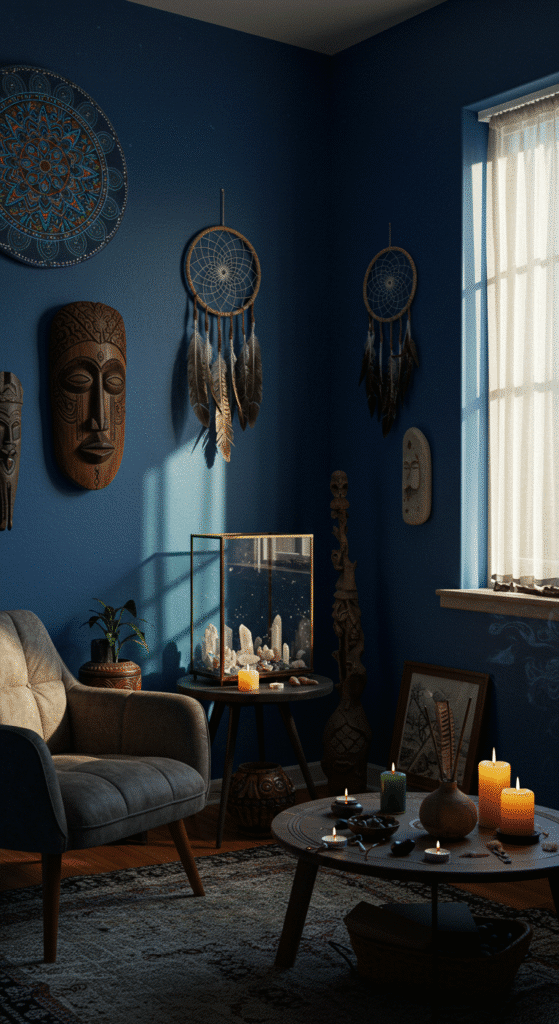
Finally, choose one symbol that represents your healing journey—a feather, a statue, a stone, or an object from a trip. Place it where you can see it daily. This totem grounds you and reminds you of your personal strength. It’s not about how it looks to others—it’s about what it means to you. In your healing room, everything should serve your spirit first.
Final Thought

Creating a healing room isn’t about how much space or money you have—it’s about intention. Each element you add should help you feel more present, more aligned, and more at peace. Whether it’s a full room or just a corner, you deserve a sanctuary that supports your emotional and spiritual well-being. Use these 30 ideas to guide you toward your own calming, nurturing retreat.

Hazel Collins is the creative voice behind Room Layered. With years of blogging experience, she shares her passion for home decor, DIY projects, and styling tips to help readers create beautiful, personalized spaces. Her ideas blend charm with practicality, making home inspiration feel both achievable and stylish.